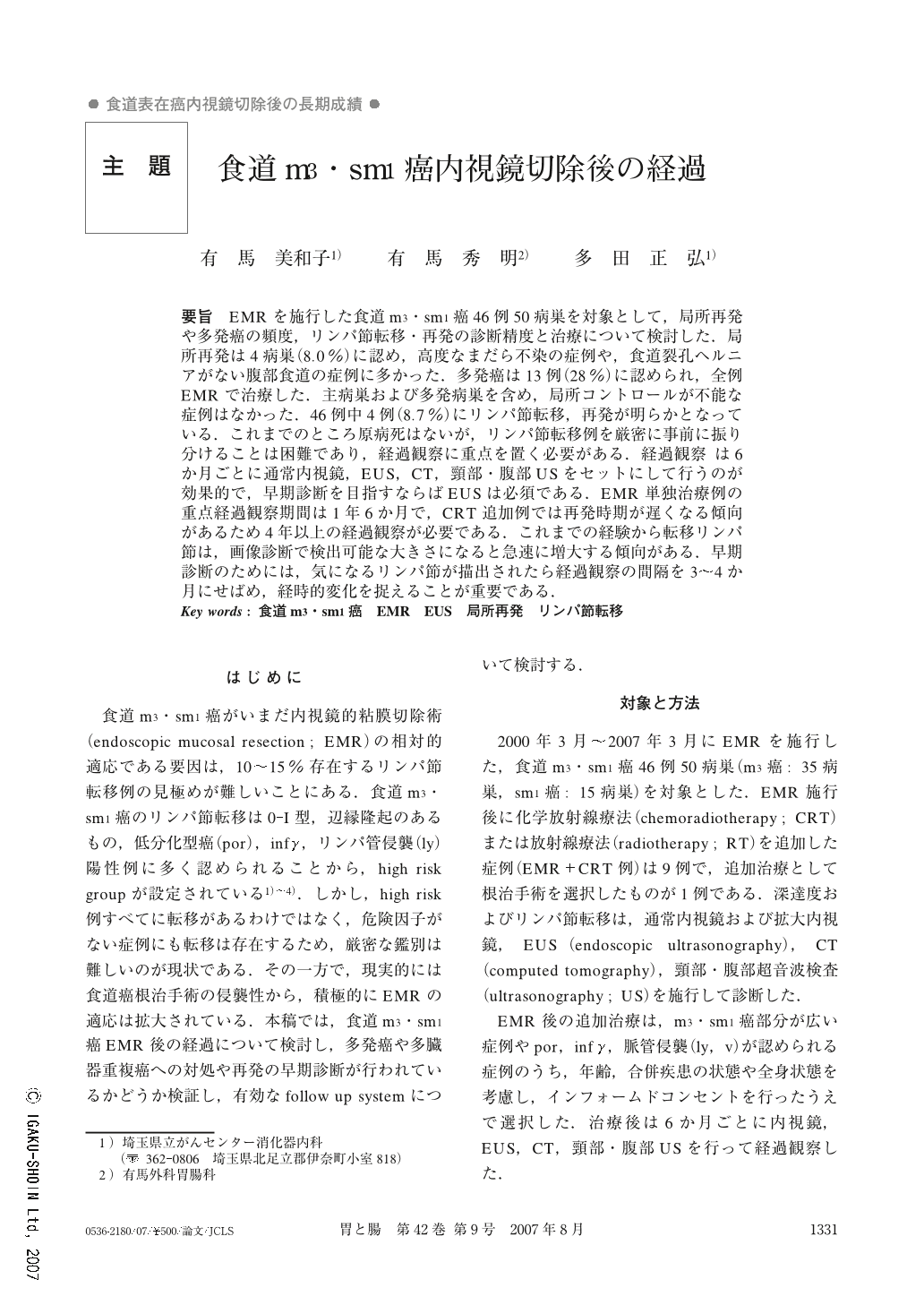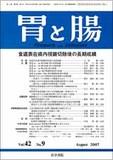Japanese
English
- 有料閲覧
- Abstract 文献概要
- 1ページ目 Look Inside
- 参考文献 Reference
- サイト内被引用 Cited by
要旨 EMRを施行した食道m3・sm1癌46例50病巣を対象として,局所再発や多発癌の頻度,リンパ節転移・再発の診断精度と治療について検討した.局所再発は4病巣(8.0%)に認め,高度なまだら不染の症例や,食道裂孔ヘルニアがない腹部食道の症例に多かった.多発癌は13例(28%)に認められ,全例EMRで治療した.主病巣および多発病巣を含め,局所コントロールが不能な症例はなかった.46例中4例(8.7%)にリンパ節転移,再発が明らかとなっている.これまでのところ原病死はないが,リンパ節転移例を厳密に事前に振り分けることは困難であり,経過観察に重点を置く必要がある.経過観察は6か月ごとに通常内視鏡,EUS,CT,頸部・腹部USをセットにして行うのが効果的で,早期診断を目指すならばEUSは必須である.EMR単独治療例の重点経過観察期間は1年6か月で,CRT追加例では再発時期が遅くなる傾向があるため4年以上の経過観察が必要である.これまでの経験から転移リンパ節は,画像診断で検出可能な大きさになると急速に増大する傾向がある.早期診断のためには,気になるリンパ節が描出されたら経過観察の間隔を3~4か月にせばめ,経時的変化を捉えることが重要である.
We examined the incidence of local recurrence and multiple cancers, the diagnostic accuracy of lymph-node metastasis and nodal recurrence, and treatment regimens in 46 patients (50 lesions) who underwent endoscopic mucosal resection (EMR) for m3・sm1 esophageal cancer. Local recurrence occurred in 4 lesions (8.0%) and was most often associated with multiple spotty iodine-unstained areas in the esophagus or with cancer of the abdominal esophagus without hiatal hernia. Multiple cancers were diagnosed in 13 patients (28%), all of whom were treated by EMR. Local control of primary and multiple lesions was achieved in all patients. Of the 46 patients, 4 (8.7%) were found to have lymph-node metastasis or nodal recurrence. As of this date, no patients have died of their disease, but it is difficult to identify patients with lymph-node metastasis in advance, so close follow-up is mandatory. Effective follow-up programs should include a set of diagnostic studies, i. e., conventional endoscopy, EUS, CT and neck and abdominal ultrasonography, performed at 6-month intervals. EUS is essential for early diagnosis. Patients treated by EMR alone should be followed up intensively for 1 year and 6 months. Patients who additionally receive chemoradiotherapy have a risk of late recurrence and should therefore be followed up for at least 4 years. Our experience indicates that lymph-node metastases tend to grow rapidly once they reach a size detectable in diagnostic imaging studies. If suspicious-looking lymph nodes are detected in diagnostic imaging studies, the interval between follow-up studies should be shortened to 3 to 4 months to facilitate early diagnosis. Changes in lymph nodes should be assessed over time.

Copyright © 2007, Igaku-Shoin Ltd. All rights reserved.


